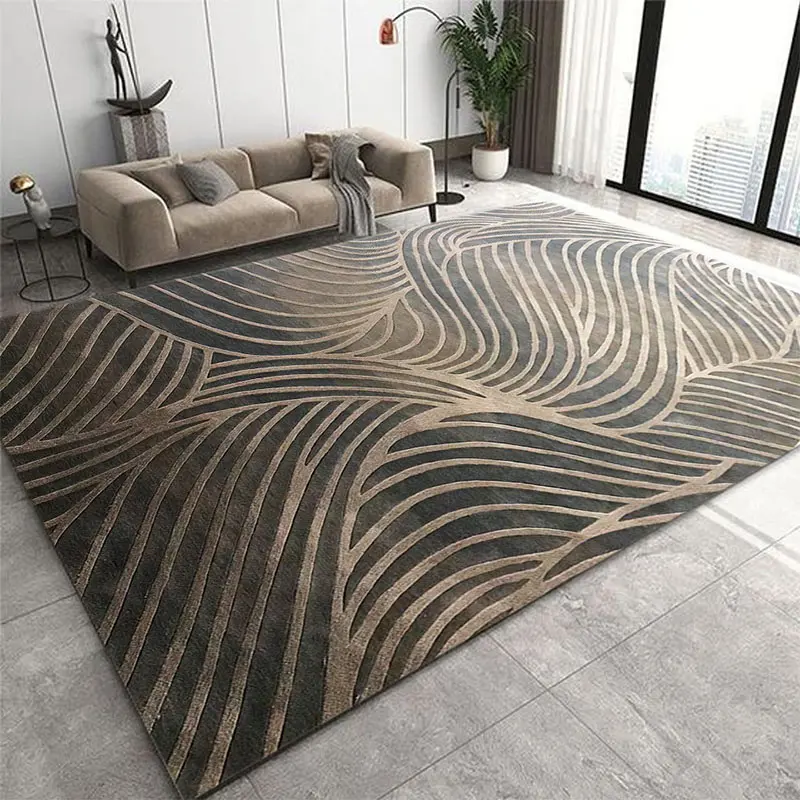In the world of commercial interior design, flooring is more than a foundation—it’s a critical element that defines a space’s aesthetic, influences its perceived size, and withstands the rigors of heavy foot traffic. For architects, designers, and facility managers, the choice of material is paramount. Among the most impactful and durable options is striped wool carpet. Far from a mere decorative flourish, a high-quality striped wool carpet is a strategic investment that offers a unique blend of style, longevity, and sustainability, making it an ideal choice for hotels, corporate offices, retail environments, and luxury residential projects.
The Unmatched Advantages of Striped Wool
While many materials can add visual interest, wool offers a suite of functional benefits that make it uniquely suited for commercial applications. When combined with a striped pattern, these benefits are amplified, creating a product that is both beautiful and exceptionally practical.
Functional Benefits of Wool
- Exceptional Durability: Wool’s natural resilience and crimped fibers allow it to spring back after compression, resisting flattening and wear over time. This makes it highly durable and perfect for high-traffic areas like corridors, lobbies, and conference rooms.
- Natural Stain Resistance: The wool fiber’s outer layer has a waxy coating that repels liquids and prevents dirt from adhering. This makes spills easier to clean and helps the carpet maintain its appearance with minimal effort.
- Acoustic Properties: Wool is a natural sound absorber, helping to reduce ambient noise and create a quieter, more comfortable environment. This is especially valuable in open-plan offices, hospitality settings, and multi-story buildings.
- Fire Resistance: Wool is naturally fire-retardant. It is difficult to ignite, does not melt, and will self-extinguish when the flame source is removed, adding an extra layer of safety to any commercial space.
Strategic Impact of a Striped Design
Beyond the inherent qualities of wool, the striped pattern itself is a powerful design tool.
- Creates a Sense of Direction and Space: Stripes can be used to visually elongate a room, guide foot traffic, or delineate different zones within an open-plan layout. A well-placed striped carpet can make a narrow hallway appear wider or a small room feel larger.
- Hides Wear and Tear: The visual complexity of a striped pattern is highly effective at camouflaging small spills, dirt, and scuff marks. This helps the carpet look pristine for longer, reducing the need for frequent cleaning and maintenance.
- Adds Visual Drama: Stripes introduce a dynamic element that can elevate a space from ordinary to extraordinary. Whether bold and graphic or subtle and tonal, they provide a sophisticated focal point and can be used to complement a brand’s color palette or an interior’s architectural lines.
Choosing the Right Striped Wool Carpet
When selecting a product for your project, it’s important to consider more than just color.
- Pile and Weave: The pile height and weave pattern affect both the feel and durability. A tighter, lower-pile loop pile carpet is often more resilient for heavy traffic than a cut pile.
- Stripe Scale and Color: The width and frequency of the stripes, as well as their color combination, should be chosen to match the scale of the room and the overall design intent. Subtle, tonal stripes create a sophisticated backdrop, while bold, high-contrast stripes make a strong statement.
- Certifications and Sustainability: Ensure the carpet meets relevant fire safety and environmental standards. Wool is a renewable and biodegradable fiber, making it a responsible choice for eco-conscious projects.
Conclusion
A striped wool carpet is far more than a decorative feature; it is a high-performance, high-impact design solution for discerning B2B buyers. By combining the natural durability and sustainability of wool with the visual power of a striped pattern, you can create commercial spaces that are not only beautiful and elegant but also exceptionally functional and long-lasting. It’s an investment that pays dividends in both aesthetics and practicality, ensuring your project makes a lasting impression.
FAQ
Q1: Is striped wool carpet more difficult to install than solid-color carpet? A: Striped carpet requires a higher level of precision during installation to ensure the pattern aligns correctly, especially in large areas. It’s crucial to hire an experienced installer who specializes in patterned carpets to achieve a seamless look.
Q2: Are there different types of stripes available? A: Yes. Stripes can vary widely in scale, from thin pinstripes to broad bands. They can also be created using different techniques, such as loop and cut pile combinations or varying yarn colors, to create different textures and effects.
Q3: How should I clean a striped wool carpet in a high-traffic area? A: Regular vacuuming is essential to prevent dirt from accumulating. For spills, blot immediately with a clean cloth. For a deeper clean, professional cleaning services that specialize in wool carpets are recommended at least once a year.
Q4: How does wool carpet’s fire resistance compare to synthetic materials? A: Wool is naturally flame-retardant and will self-extinguish, whereas many synthetic fibers will melt and can release toxic fumes when exposed to a flame. This makes wool a safer choice for commercial environments.
Post time: Aug-27-2025












